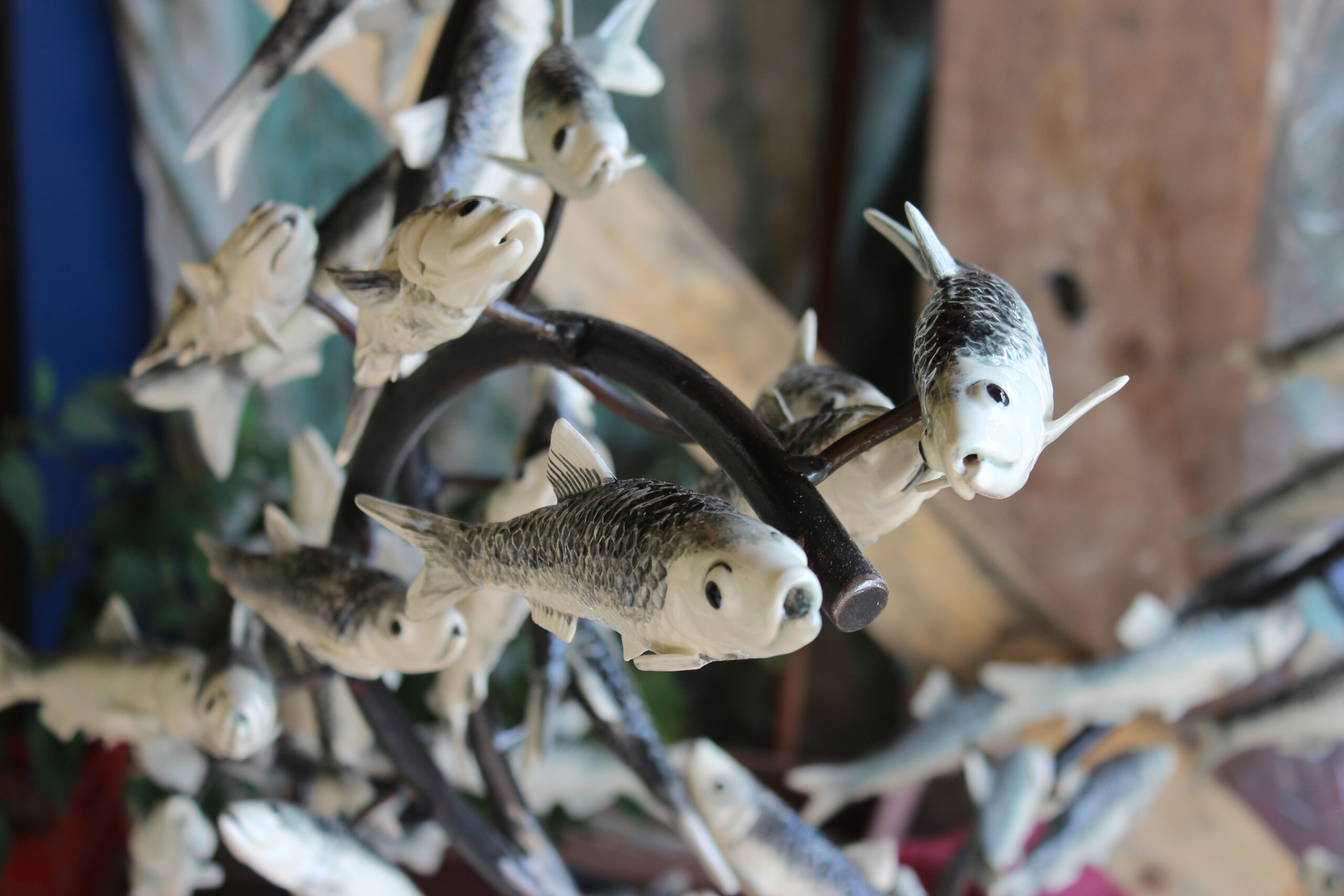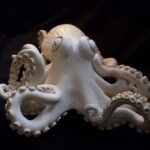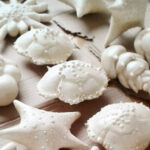Menu

Phylogenetic School (2015)
“Phylogenetic School” is a collaboration with the marine biologist Dr. Cristian B. Canales-Aguirre. The work represents the phylogenetic relationship of five species of sardines of the genus Sprattus, and includes morphological details and mitochondrial DNA sequences that were used for his reconstruction as part of his doctoral thesis.
The technique used is ceramic stoneware with underglazes and glaze. This piece is the won of the first version of the 2014 Science and Art Fund, organized by the Extension Department of the University of Concepción.
Process
Research on the five species of Sprattus that were investigated in the thesis of Cristian Canales-Aguirre
Five species where part of thestudy: Sprattus fueguensis, S. novaehollandiae, S. muelleri, S. antipodum and S. sprattus. Idid the general shape of each especies to create press-molds. However, each individual was modeled, altered, scales redrawn and modified to show individual variation (the essence of evolution).
Although the general form was startedin a press mold each individual fish was modeled to add movement, different swimming positions, all their scales and unique features.
Each individual was unique, and presented intended and haphazard variations.
I used underglazes and glazes over the bisque fishes.
I fired to Cone 6 in an electric kiln.
I randomly selected some fishes to add sections of the actual individual genetic sequences of the study. These sequences were used to reconstructed the phylogenetic relationships.
The phylogenetic tree was done in wrought iron. Instead of having it straight I curled it on itself so that it plays a role as the support for the school of fishes.
I placed the individuals of each species in one branch of the twisted phylogenetic tree.
Previous
Next

